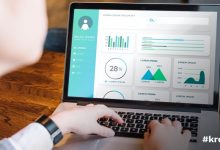What Is the Best Way To Present a Business Analytics Report?
Index Of The Blog
There are a few things to consider when presenting a business analytics report or a consulting PowerPoint. The report should be clear, concise, and easy to understand. It should also be visually appealing and easy to follow. The most important thing to remember when presenting a business analytics report is to make sure the audience understands the data.
It is important to understand how to present a business analytics report so that the audience can understand the data. Keep reading to learn more about how to make your report high quality.
Learn the basics.
Masters in business analytics online programs are designed to help students develop the skills necessary to make data-driven decisions in a business setting. The coursework typically covers topics such as data mining, business intelligence, and financial modeling. Graduates of these programs are typically well equipped to work as business analysts or data scientists.
Studying business analytics can help you learn the different ways of presenting a business analytics report. The most effective approach will vary depending on the specific data and the goal of the report. However, some general tips for presenting business analytics include:
- Using clear, concise language
- Presenting data in a visually appealing way
- Making use of charts and graphs
- Including explanations of any complex concepts
- Stating the conclusions of the report
- Providing context for the data
- Making recommendations for further action
Make it easy to read and understand.
When creating a business analytics report, it is important to make it easy to read and understand. This means using clear and concise language, as well as formatting the report in a way that makes it easy to follow. Some tips for doing this include using headings and subheadings to break up the information, using graphs and charts to illustrate data, and using bullets and lists to highlight key points. It is also important to be mindful of the audience for the report and to tailor the language and formatting accordingly.
Gather feedback.

The purpose of gathering feedback is to ensure that the business analytics report is meeting the needs of the audience. Feedback can help identify any areas that need improvement and can help ensure that the report is effective in making informed business decisions. There are a few ways to gather feedback:
Surveys: This is a great way to gather feedback from a large number of people. You can ask a series of questions to help you understand what people liked and didn’t like about the report, as well as what they found to be the most helpful.
Interviews: This can be a more personal way to gather feedback. You can talk to people who have either worked with the report or who have read it. This can help you to get feedback on what worked and what didn’t, as well as what could be improved.
Focus Groups: This is a great way to get feedback from a variety of people who may have different opinions. You can ask them questions about the report and get their thoughts on what worked and what didn’t.
Comments: You can also gather feedback by looking at the comments that people leave on the report. This can help you understand what people liked and didn’t like, as well as what could be improved.
Gathering feedback is an important part of creating a business analytics report that is effective and meets the needs of the audience. By using one or more of the methods listed above, you can gather feedback that will help you improve the report.
Collect and organize data.

The process of collecting and organizing data is an essential part of any business analytics report. The data must be collected in a way that is meaningful and easy to understand, and it must be organized in a way that makes it easy to find and use. There are a number of different ways to collect and organize data, and the best way to present a business analytics report will vary depending on the specific data set and the goals of the report.
One common way to collect data is to use a data warehouse. A data warehouse is a centralized repository for all of the data collected by a company. This data can be organized in a variety of ways, depending on the needs of the report. For example, the data might be organized by product line, by customer segment, or by geographical region.
Another common way to collect data is to use a data mining tool. A data mining tool allows you to analyze large data sets to find patterns and relationships. This can be useful for identifying trends and correlations that might not be obvious from a smaller data set.
Once the data has been collected, it must be organized in a way that makes it easy to find and use. This might involve organizing the data into tables and spreadsheets or into a data warehouse or data mining tool. The organization of the data will depend on the specific needs of the report.
Once the data has been collected and organized, it is ready to be used in a business analytics report. The report can be customized to meet the specific needs of the user, and the data can be presented in a variety of formats, including charts, graphs, and tables.
Create a draft.
When creating a draft of a business analytics report, it is important to first determine the purpose of the report. Is the report meant to inform management about recent performance, or is the report meant to help identify opportunities and areas for improvement?
After determining the purpose of the report, gather the data that is needed to support the findings. This data can be gathered from a variety of sources, such as financial reports, surveys, customer data, and data gathered from social media.
Once the data is collected, it should be analyzed to determine which findings are most important. The findings can then be summarized and presented in a clear and concise manner in the draft of the report.
It is important to note that the draft of the report is not meant to be the final report. The draft should be used as a tool to help gather feedback and to determine which findings should be included in the final report.
Consult a professional.

A consulting PowerPoint is a presentation created by a consultant to help explain a business analytics report to a client. The presentation should be clear and concise and should highlight the most important findings from the report.
The first step in creating a consulting PowerPoint is to read the business analytics report thoroughly. Next, create slides that summarize the most important findings from the report. Be sure to include charts and graphs to illustrate the data, and use clear and concise language to explain the findings. The final step is to present the PowerPoint to the client. Be sure to answer any questions the client may have, and explain the findings in detail.
There is no one-size-fits-all approach, as the best way to present a business analytics report will vary depending on the specific data and audience. Ultimately, the most important thing is to be sure that the report is easy to understand and interpret so that the data can be used to make informed business decisions.













